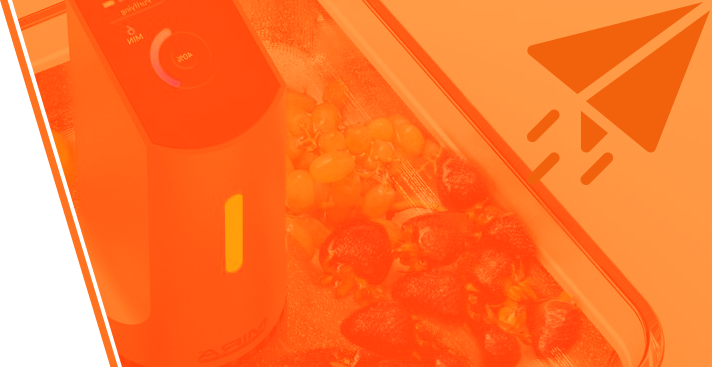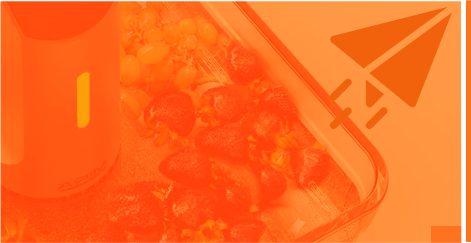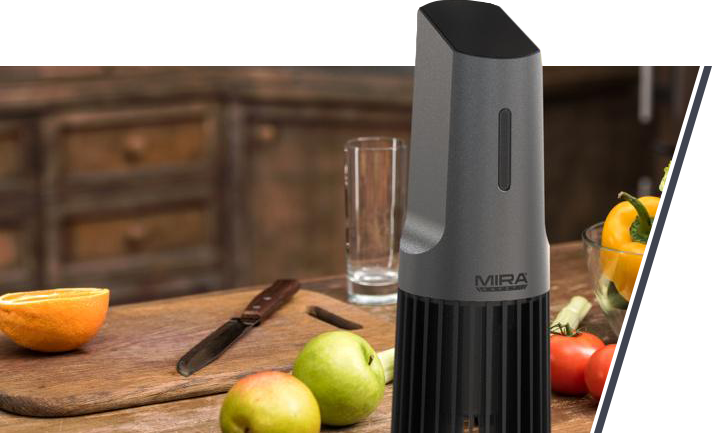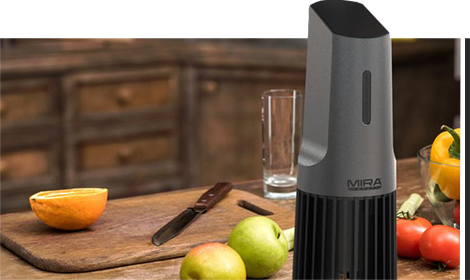It’s the Only Bacteria with 11 Nobel Prizes … It doesn’t even need oxygen to grow.
It’s the single most studied prokaryotic model organism, whose help has been essential for recombinant DNA development.
More than 700 serotypes have been identified, some of which are entirely harmless and found within the human body—while others are potentially fatal.

(Image source: Image courtesy of FDA)
The humble E. coli bacteria is essential for life as we know it, helping us to digest our food and produce critical vitamins. But it can also pose a severe dietary threat, especially to the younger members of your family.
So today, we’re taking a much deeper look at this unique bacterium.
We’ll show you how it interacts with the human body, the most common sources of harmful infection, and the history of outbreaks over the last 30 years. Most importantly, we’ll cover the three simple steps to protect yourself and your family from E. coli exposure in your everyday diet.
Let’s get started with the most critical question of all.
Table of Contents
-
01
What Makes E. Coli in Food So Dangerous?
-
02
Five Most Likely Sources of E. Coli Infection
-
03
A History of Accelerating Outbreaks
-
04
Symptoms, Prevention & Treatment of E. Coli
-
05
A Rare But Serious Complication: Hemolytic Uremic Syndrome (HUS)
-
06
3 Simple Steps to Protecting Your Family From E. Coli
-
06
An Ever-Present Threat
What Makes E. Coli in Food So Dangerous?
Escherichia coli, or E. coli for short, was first discovered in 1885 by a German-Austrian pediatrician named Theodor Escherich (not a coincidence).
Escherich was studying human feces and noticed the same bacteria across numerous samples—so he dubbed it Bacterium coli commune due to its assumed origin in the colon.
In reality, he’d stumbled upon a humble bacterium crucial for human and animal digestion.
Over the following decades, it was discovered that strains of the same bacteria produced vitamin K2 while fighting off pathogenic bacteria that could make their host organism sick.
Scientists eventually realized that there are numerous strains of E. coli in food, some of which could be poisonous for human beings—even in minuscule quantities. These types produce something called “Shiga toxin,” one of the most potent bacterial toxins known to man.
Shiga toxin causes renal damage in rabbits, greyhounds, mice, and baboons. It eats away at the lining of a human’s intestines and kidneys. And it’s lethal upon direct injection. Thus, strains of Shiga-Toxin E. coli (STEC) are responsible for serious human illness, including severe complications like Hemolytic Uremic Syndrome (HUS), which can be fatal.

(Image source: Image courtesy of Shiga Toxin)
The most common means of transmission is (unfortunately) fecal-oral. So even small quantities of animal waste in the food supply can be dangerous. So as America’s massive factory farms continue to grow larger and larger while cutting costs, these things become more likely.
In most cases, E. coli only results in a few days of discomfort as a worst-case scenario. But for the weakest among us—including infants and the immunocompromised—it can be a potentially deadly foodborne threat.
Worst of all, you’ll rarely know about an outbreak until it’s too late. It’s just an ever-present risk most people accept. But you don’t have to.
Let’s start by breaking down the sources.
Five Most Likely Sources of E. Coli Infection
Most of the Shiga toxin E. coli (STEC) that infects humans comes from cattle. Some strains come from other livestock animals (like sheep), while cross-contamination is another major factor that can taint a variety of food products:
-

Ground meat is more likely than other cuts of meat to carry E. coli for two primary reasons. First, a portion of the animal’s intestine (where E. coli bacteria live) can sometimes be ground into the meat. And since the meat of multiple animals can be mixed in the grinding process, an infection can easily be spread across numerous markets and states from a single tainted batch. E. coli in ground beef is a common threat. If ground meat isn’t cooked fully, small quantities of the bacteria can survive.
-

Fresh Fruits and Vegetables can be contaminated with E. coli when exposed to water carrying the bacteria. The exposure commonly happens in farms where crops and livestock share water sources. These outbreaks (especially with leafy greens like spinach and romaine lettuce) have become increasingly common in recent years.
-

Untreated milk is another potential source of infection since it hasn’t been heated through the usual pasteurization process to kill the bacteria. Pasteurization is crucial for ensuring that various foods are safe—including everything from fruit juice to yogurt. Unpasteurized cheeses have become more prevalent recently but should be avoided.
-

Water can also be contaminated, especially in lakes, ponds, or other bodies of water located near large factory farms.
-

Animals and Other People also spread the bacteria. Special care must be taken when providing care to an infected person, even though infected people are often asymptomatic for days.
While these are the different possible sources of infection, it’s important to remember that real-world cases are most often food-related.
During the ten years between 1998 and 2007, approximately 68% of all E. coli cases resulted from tainted food. Another 18% were waterborne cases, 8% resulted from contact with animals, and 6% resulted from person-to-person contact.
Before we go any further, let’s take a quick look at the history of epidemic E. coli in food outbreaks—to give you a better idea of what you can expect.
A History of Accelerating Outbreaks
One of the first widespread E. coli outbreaks taking headlines in America started in 1992 at the Jack in the Box fast food chain in the Northwestern United States. This outbreak killed three children, left 500 people sick, and severely damaged the chain’s reputation.
As a result of this outbreak, Bill Clinton’s presidential administration committed to random testing for E. coli in ground beef. The meatpacking industry fought back against this new law but ultimately lost.

(Image source: Image courtesy of Outbreak Museum)
Jack in the Box … Yum?
1996 saw a deadly outbreak overseas in Wishaw, Scotland, resulting in 21 deaths.
But the next major American outbreak didn’t come for another decade when 19 million pounds of beef were recalled from ConAgra’s Greeley, Colorado plant in 2002. The meat had already been shipped to 21 states. Thirty-five people fell ill due to this outbreak, including one death.
Four years later, in 2006, there was an epidemic of E. coli O157: H7, a particularly nasty strain that can cause severe abdominal pain. This epidemic was tied directly back to bagged fresh spinach, eventually leading to 199 infections across 26 states. Three people died, and 31 more developed Hemolytic Uremic Syndrome (HUS, more on that in a moment).
By October of that year, authorities were able to match the specific strain of E. coli to one found on a neighboring cattle ranch.
The following month, in November of 2006, an outbreak started at nine different Taco Bell locations in New Jersey and New York. The company removed green onions from its menus nationwide after preliminary reports indicated they might be the cause of the outbreak.
By December, the CDC had documented 71 cases of E. coli from the same strain found in Taco Bell’s tainted food.
The following year, Topp’s Meat Company recalled 21.7 million pounds after an outbreak of E. coli in ground beef. Though less widespread, this outbreak still ends up with at least 21 people in the hospital and at least two suffering from HUS. Later, in 2010, an outbreak caused by cheese sold at Costco ended with 38 sickened across five different states.
2011 saw history’s deadliest documented E. coli O104:H4 outbreak, with 53 dead due to tainted “organic” fenugreek sprouts in Germany.
And, of course, in 2015, the E. Coli outbreak at Chipotle ended up making national news.

(Image source: Image courtesy of Marketwatch)
By November of that year, at least 45 cases of E. coli infection were linked to “a common meal item or ingredient served at Chipotle Mexican Grill restaurants.” The outbreak was a significant blow to the company’s reputation.
Since then, Americans have seen at least one new major E. coli in food outbreak yearly, and E. coli in ground beef is especially common.
In 2018, a tainted romaine lettuce outbreak infected 197 people across 35 states—including five deaths.
An outbreak in 2019 left 209 people across ten states infected by tainted beef.
And in 2020, another outbreak of romaine lettuce left 85 in the hospital and 15 with HUS.
So as you can see, it’s not just the pace of these outbreaks that are increasing—but the number of people infected across more and more different states.
Symptoms, Prevention & Treatment of E. Coli
Once infected with E. coli, it’s common to experience sudden cramps and abdominal pains. Then diarrhea will typically follow within the next 24 hours. The stool will become more and more watery, eventually becoming bloody in many cases.
It’s also common to have painful headaches or nausea following an infection. In some cases, individuals might also experience a fever.
If you believe you’re suffering from an E. coli infection, you should visit a doctor or emergency room immediately. Medical professionals can isolate the bacteria from stool samples, which helps them identify the strain and the source of your infection.

Infections usually subside after about a week without causing any long-term problems. Medical professionals often advocate staying hydrated and eating nutritious foods during your illness.
Suppose symptoms persist for more than a few days. In that case, you should seek medical attention, especially if you experience bloody stool or prolonged diarrhea, as these can be symptoms of hemolytic uremic syndrome (HUS, more on that in a moment).
Incubation periods typically range between 3 and 8 days, with most patients fully recovering over ten days. But upwards of 10% of those infected with STEC can develop HUS, which has a fatality rate of roughly 3-5%. So while infections are mostly inconvenient, they still carry an inherent risk.
Antibiotics are typically not prescribed for treatment since they don’t usually positively affect the infection. It’s important to note that E. coli infection can quickly spread, so you should take careful precautions when caring for an infected person.
Again, most infected will experience minor discomfort, abdominal pain, and frequent trips to the bathroom. E. coli infections are often associated with food poisoning because it can be hard to tell the difference.
But in a few limited cases, the difference can be fatal …
A Rare But Serious Complication: Hemolytic Uremic Syndrome (HUS)
If diarrhea persists for several days after an E. coli infection, the cause could be Hemolytic Uremic Syndrome or HUS.

HUS is closely related to E. coli strain O157:H7 but can also result from other strains. Only a tiny fraction of those infected with E. coli will suffer from HUS, most common in children under five years of age or anyone who is immunocompromised or suffering from a weak immune system.
Infection with HUS can cause red blood cell destruction at first. Early signs of infection include (as mentioned) prolonged diarrhea, mainly when it results in bloody stool. Other symptoms include chills, headaches, and fever.
Individuals may experience weakness, exhaustion, paleness, and skin tenderness as the infection worsens. Complications may result in anything from seizures and blood pressure issues to stroke, kidney disease, coma—or even death.
There’s not a single specific test for diagnosing HUS. Instead, a panel of tests is used for differential diagnosis.
Treatment for HUS requires hospitalization in the majority of cases. Everything from specialized diet and hydration routines may be combined with kidney dialysis and blood transfusion. Most will recover from HUS, but it can sometimes be fatal.
It’s overwhelming to think all these symptoms might result from simply opening a bag of salad greens or spinach—but it’s a reality.
Fortunately, you can take a few key steps to avoid E. coli, HUS, and other foodborne pathogens altogether.
3 Simple Steps to Protecting Your Family From E. Coli
It’s doubtful that you or a member of your family will be exposed to E. coli in your everyday life.
Nevertheless, outbreaks are becoming increasingly common. And you’re unlikely to receive any warning of an outbreak before it’s too late, which means you could suffer the consequences on your own.
To prevent possible E. coli exposure, we recommend following these three simple steps:
#1: Avoid Ground Meats: This is a big first step. Everyone loves a great hamburger. But it’s a simple fact that ground beef is far more likely to expose you to E. coli than practically any other cut of meat due to the way it’s processed and prepared. Multiple epidemics have started with ground beef—often resulting in tens of millions of pounds being recalled.

Whole cuts of beef, steaks, chicken, and pork are a much better alternative. Unlike ground meat, these cuts can be effectively detoxified (more on that in a moment). You know what you’re getting. And each piece of meat only comes from a single animal, reducing the risk of cross-contamination.
If you do eat ground meats, then you should ensure they are fully cooked through. That’s easy for recipes like spaghetti sauce or taco meat, but it means well done for burgers. A medium hamburger is heated to an internal temperature of 160°F at most. Technically that’s just enough to kill E. coli in ground beef … but still a little too close for comfort. However, it’s less of a concern if you truly trust your butcher (or chef).
#2: Avoid Cheap Produce: The most common cause of E. coli epidemics over the last generation has been leafy greens—primarily romaine lettuce and bagged spinach. This product is convenient and cost-effective but often produced on large factory farms with a much higher risk of E. coli contamination. Local, fresh, and organic can be much healthier if it’s within your budget.

If you choose to eat pre-packaged or bagged greens, you should still wash them before eating. Even pre-washed, they may have been washed with contaminated water; therefore, cleaning them at home is the only way to be sure. This leads to our final step.
#3: Upgrade Your Food Detoxification Process: The final step is to upgrade your food cleansing/detoxification process. And for this, traditional hand-washing simply isn’t going to be enough.
Fortunately, the MIRA Safety DTX-1 Detoxifier is 20 times more effective than cleaning foods by hand. This state-of-the-art kitchen upgrade utilizes ultrasonic cleansing combined with rapid oxidation to clean everything from fruits, vegetables, and leafy greens to whole cuts of meat and even household utensils, including silverware, flatware, and more.
This handheld detoxifier is portable, battery-powered, and features an easy-to-use touchscreen. No chemicals, harsh cleaners, soaps, or additives are required for operation. Instead, submerse the lower half of the detoxifier in a bowl of clean water with whatever you need to clean, and the Detoxifier will take care of the rest.

Unfortunately, since E. coli can infect in such minuscule doses, it’s impossible to be sure you’ve wholly cleansed your food or utensils. But a tool like the DTX-1 Detoxifier can vastly improve the quality of your home cleaning—which can have plenty of benefits.
An Ever-Present Threat
The increasing occurrence of E. coli outbreaks could be caused by increased factory farming throughout the US and constant cost-cutting to pursue the best possible price for end users (at the expense of their safety).
At the same time, it’s entirely possible that these kinds of outbreaks weren’t tracked in the past—even though they may have happened just as often (or more often, even).
It’s possible that there are thousands of cases of E. coli in ground beef and other food items across the world today, and many would be chalked up to “everyday food poisoning” without a second thought. Since E. coli is rarely fatal—and the worst symptom most people experience is diarrhea and stomach pain—it is not pursued with the same diligence as some diseases.
But the ease with which infections can spread, their effect on small children, and the potential (however small) to develop into something fatal make it something you don’t want to ignore.
What’s more, if you take the necessary steps to protect your family from E. coli, you’ll be taking the exact steps to protect them from various other bacteria and foodborne pathogens.
With a few basic precautions and a MIRA DTX-1 Detoxifier, you can provide your family with a safe and healthy diet they’ll enjoy for years to come.





